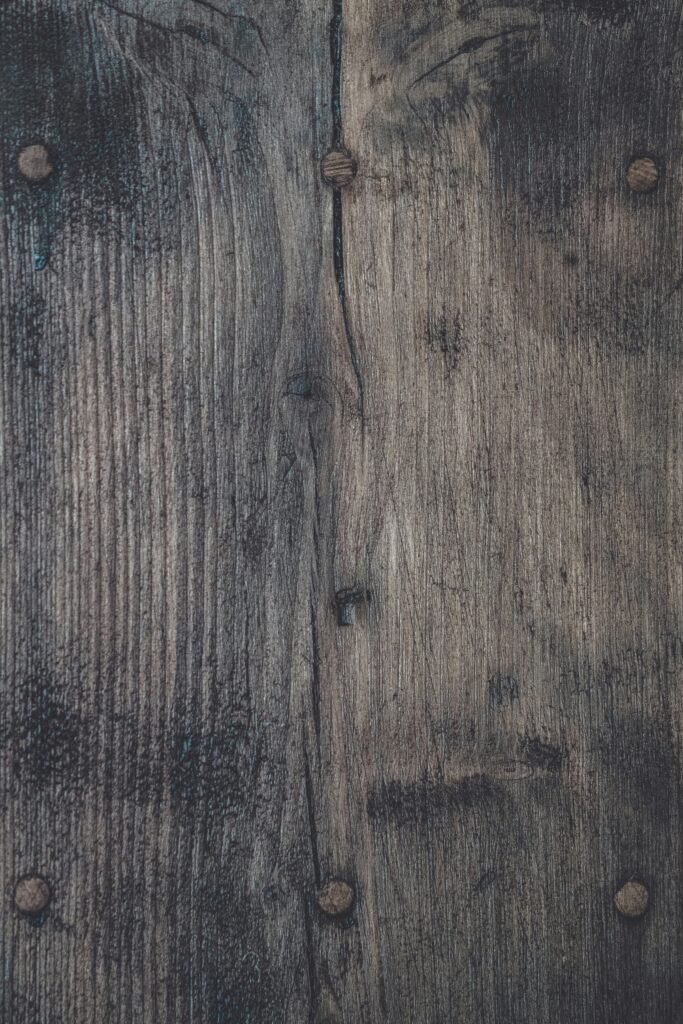If you’re in the market for wood crates, there are a few crucial factors that you should keep in mind before making a purchase. Whether you need them for shipping, storage, or as a decorative element, choosing the right wood crates can make all the difference. From the type of wood used to the size and weight-bearing capacity, this article will guide you through the essential factors to consider when selecting the perfect wood crates for your needs. So, let’s dive right in and make sure you’re well-equipped with the knowledge needed to make the best choice!

This image is property of images.unsplash.com.
Durability
Wood crates are known for their exceptional durability, making them an excellent option for a variety of uses. When considering the durability of a wood crate, two main factors come into play: the material used and the construction of the crate.
Material
Wood crates are typically made from strong and sturdy materials such as solid wood or plywood. These materials provide excellent resistance against impact, ensuring that your items will be well-protected during transportation and storage. The solid wood used in the construction of wood crates is known for its strength and durability, making it an ideal choice for heavy-duty applications.
Construction
The construction of a wood crate greatly influences its durability. Well-constructed wood crates often feature reinforced corners and joints, which provide added strength and stability. Additionally, the use of high-quality fasteners, such as nails or screws, ensures that the crate remains intact and secure even under stress. It is important to choose a wood crate that has been carefully constructed to withstand the rigors of handling, transportation, and storage.
Strength
The strength of a wood crate is closely related to its durability. The overall strength of a wood crate depends on various factors, including the type of wood used, the thickness of the wood panels, and the construction techniques employed. When evaluating the strength of a wood crate, consider the load-bearing capacity it offers. A strong wood crate should be able to withstand the weight of your items without compromising its integrity.
Size and Capacity
Wood crates come in a range of sizes and capacities to accommodate different needs. It is important to consider the dimensions and weight capacity of a wood crate to ensure it meets your specific requirements.
Dimensions
Wood crates are available in various dimensions, allowing you to choose the size that best suits your needs. Consider the dimensions of your items and the space available for storage or transportation when selecting a wood crate. It is important to choose a size that provides enough room for your items to fit comfortably without being too spacious, which could result in shifting during transit.
Weight Capacity
Another crucial factor to consider when choosing a wood crate is its weight capacity. Different wood crates have different weight-bearing capabilities, and it is vital to select a crate that can handle the weight of your items. Exceeding the weight capacity of a wood crate can compromise its structural integrity and lead to potential damage to your items.
Internal Space
In addition to overall dimensions and weight capacity, it is important to consider the internal space of a wood crate. Wood crates with well-designed internal dimensions can maximize storage space and ensure efficient use of the available area. Look for wood crates that offer ample internal space while still maintaining the necessary structural integrity.
Functionality
The functionality of a wood crate plays a significant role in determining its ease of use and practicality for your specific needs.
Versatility
Wood crates are highly versatile and can be used in various applications. Whether you need them for industrial use, shipping, or storage, wood crates can be customized to meet your specific requirements. They can be designed with features such as removable panels, dividers, or inserts to accommodate different items and facilitate organized storage or transportation.
Ease of Use
Wood crates are designed for convenience and ease of use. Look for crates that have user-friendly features such as handles or built-in lifting points to facilitate easy handling and transportation. Additionally, consider crates that are designed for easy stacking, as this can optimize storage space and make handling more efficient.
Accessibility
When choosing a wood crate, consider its accessibility features. Some wood crates have hinged or removable panels, allowing easy access to the contents without the need to take out all the items. This can be particularly useful if you frequently need to retrieve specific items from the crate without disrupting the arrangement of other items.
Design and Style
Wood crates not only offer functionality but can also enhance the aesthetic appeal of your space. Consider the design and style of the wood crate to ensure it aligns with your preferences and complements the overall decor.
Aesthetics
Wood crates have a timeless appeal and can add a rustic or vintage touch to any setting. The natural beauty of wood can create a warm and inviting atmosphere, making wood crates an excellent choice for both residential and commercial spaces. Look for wood crates that have a well-finished surface and showcase the natural grain and texture of the wood.
Finish
The finish of a wood crate can significantly impact its appearance and durability. A high-quality finish not only enhances the aesthetic appeal of the crate but also protects the wood from moisture, scratches, and other potential damage. Consider wood crates that have been treated with a protective finish, such as varnish or lacquer, to ensure longevity and a polished look.
Customization Options
Wood crates can be customized to suit your specific design preferences. Whether you prefer a specific stain color or want your logo or branding incorporated into the design, wood crates can be customized to reflect your unique style. Consider wood crates that offer customization options to make a more personalized statement.

This image is property of images.unsplash.com.
Protection and Security
Wood crates provide excellent protection and security for your items, ensuring their safe transportation and storage.
Cushioning
Wood crates can be lined with various materials, such as foam or padding, to provide cushioning and protect delicate or fragile items. Consider crates that offer cushioning options to ensure your items remain secure and undamaged during transportation.
Locking Mechanisms
To enhance security, some wood crates are equipped with locking mechanisms. These mechanisms can range from simple latches to more advanced locking systems, providing an additional layer of protection for your items. Consider the level of security needed for your specific needs and choose a wood crate with appropriate locking mechanisms.
Weather Resistance
Wood crates can be treated or coated to enhance their weather resistance. This is particularly important if you plan to use the crates for outdoor storage or transportation. Consider wood crates that have been treated with weather-resistant coatings to ensure they can withstand exposure to moisture, sunlight, and other weather elements without compromising their structural integrity or the safety of your items.
Cost and Value
When considering wood crates, it is important to weigh the cost against the overall value they offer.
Price Range
The price range of wood crates can vary depending on several factors, including the size, material, construction, and additional features. Consider your budget and compare prices across different suppliers to find the best value for your investment. Remember that while cost is important, it should not be the sole determining factor when choosing a wood crate.
Long-term Investment
Wood crates are often considered a long-term investment due to their durability and reusability. While they may have a higher upfront cost compared to other packaging or storage options, their longevity can offset the initial investment. Consider the potential cost savings over time when evaluating the value of wood crates.
Additional Features
Consider the additional features and benefits offered by different wood crate options. These may include features such as removable panels, collapsible designs, or specialized inserts for specific items. Assess which additional features are most relevant to your specific needs and determine their value in relation to the overall cost.

This image is property of images.unsplash.com.
Sustainability
In today’s environmentally conscious world, the sustainability of the materials used in wood crates is an important factor to consider.
Eco-friendly Materials
Some wood crates are made from eco-friendly materials such as sustainably sourced wood or recycled wood products. These environmentally conscious options help reduce the demand for new wood and minimize environmental impact. Consider wood crates made from eco-friendly materials to align with your sustainability goals.
Certifications
Look for wood crates that have obtained certifications from recognized organizations that verify their sustainability practices. Certifications such as Forest Stewardship Council (FSC) or Programme for the Endorsement of Forest Certification (PEFC) demonstrate that the wood used in the crates has been responsibly sourced from well-managed forests.
Recyclability
Consider the recyclability of the wood crates when evaluating their sustainability. Wood crates that can be easily dismantled and recycled at the end of their life cycle minimize waste and contribute to a more sustainable future. Look for crates that are made from materials that can be recycled or repurposed.
Transportation and Handling
Wood crates should be designed to facilitate easy transportation and handling, ensuring efficiency and safety.
Weight
Consider the weight of the wood crate, especially if you anticipate frequent handling or transportation of the crates. Heavy wood crates may require additional equipment or manpower for lifting, which can increase costs and potential risks. Choose wood crates that strike a balance between durability and manageable weight.
Stackability
Efficient use of storage space can be achieved through stackable wood crates. Crates that can be easily and securely stacked on top of each other save valuable floor space and allow for organized and streamlined storage. Look for wood crates that have been designed with stackability in mind.
Handling Equipment Compatibility
Consider the compatibility of the wood crates with standard handling equipment such as forklifts or pallet jacks. Some wood crates are designed with features such as built-in pallet bases or forklift pockets to ensure easy and secure lifting and transportation. Assess whether the wood crates can be easily integrated into your existing handling processes.
Storage Space
Optimizing storage space is essential, and wood crates can provide efficient solutions.
Nesting Ability
Wood crates that have the ability to nest or stack inside one another when empty save valuable space during storage or return transportation. This nesting ability reduces the footprint required when the crates are not in use, making them more space-efficient. Look for wood crates that allow for easy nesting without compromising their structural integrity.
Collapsible Design
Some wood crates feature a collapsible design, allowing them to be easily folded or disassembled when not in use. This collapsibility is particularly useful if storage space is limited or if the crates need to be transported back after emptying. Consider wood crates with a collapsible design for maximum space efficiency.
Space Efficiency
Evaluate the overall space efficiency of the wood crates. This includes not only their external dimensions but also considerations such as the internal space utilization and the ability to stack or nest. Choose wood crates that offer the highest level of space efficiency without compromising functionality and durability.
Supplier and Reputation
When purchasing wood crates, the reliability of the supplier and their reputation within the industry should be considered.
Supplier Reliability
Choose a supplier with a reputation for reliability and professionalism. A reliable supplier will ensure timely delivery, provide accurate product information, and offer excellent customer service. Research the supplier’s track record and read customer reviews to gauge their reliability.
Customer Reviews
Customer reviews can provide valuable insights into the quality and performance of wood crates offered by different suppliers. Look for positive reviews that highlight the durability, functionality, and overall satisfaction of customers who have used the wood crates. This can give you confidence in your purchasing decision.
Industry Experience
Consider the industry experience of the supplier. Suppliers with a long-standing history in the wood crate industry are more likely to have the knowledge and expertise necessary to produce high-quality crates. They are also more likely to have developed solid relationships with manufacturers and can offer a wide range of options to meet your specific needs.
In conclusion, when choosing wood crates, it is important to consider factors such as durability, size and capacity, functionality, design and style, protection and security, cost and value, sustainability, transportation and handling, storage space, and the reputation of the supplier. By carefully evaluating these factors, you can select wood crates that meet your specific requirements and provide a reliable and efficient solution for your packaging, transportation, and storage needs.
